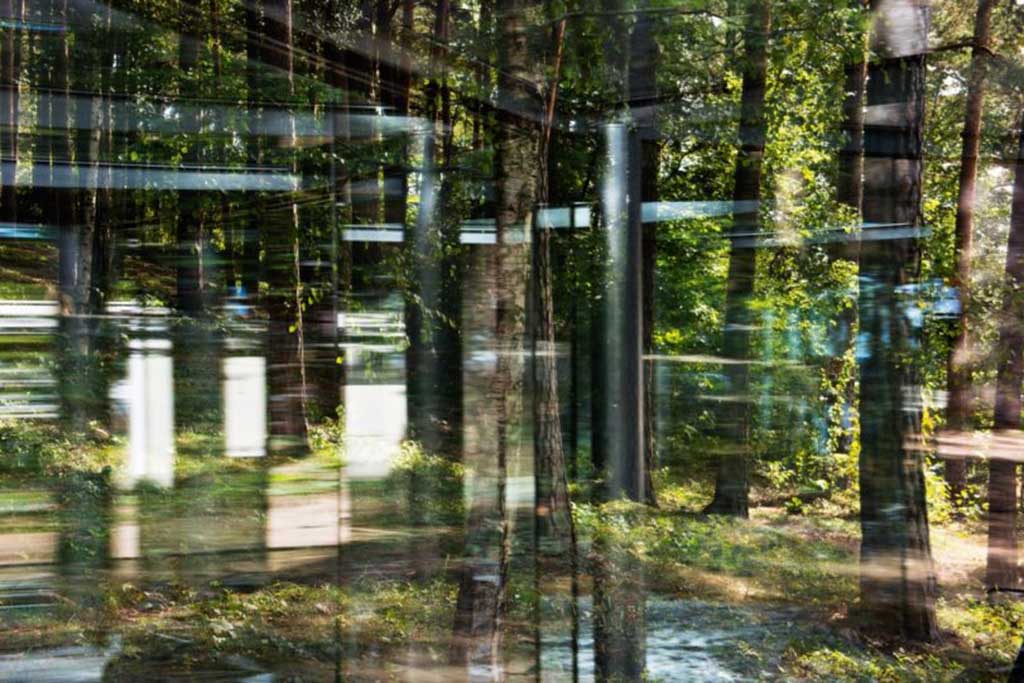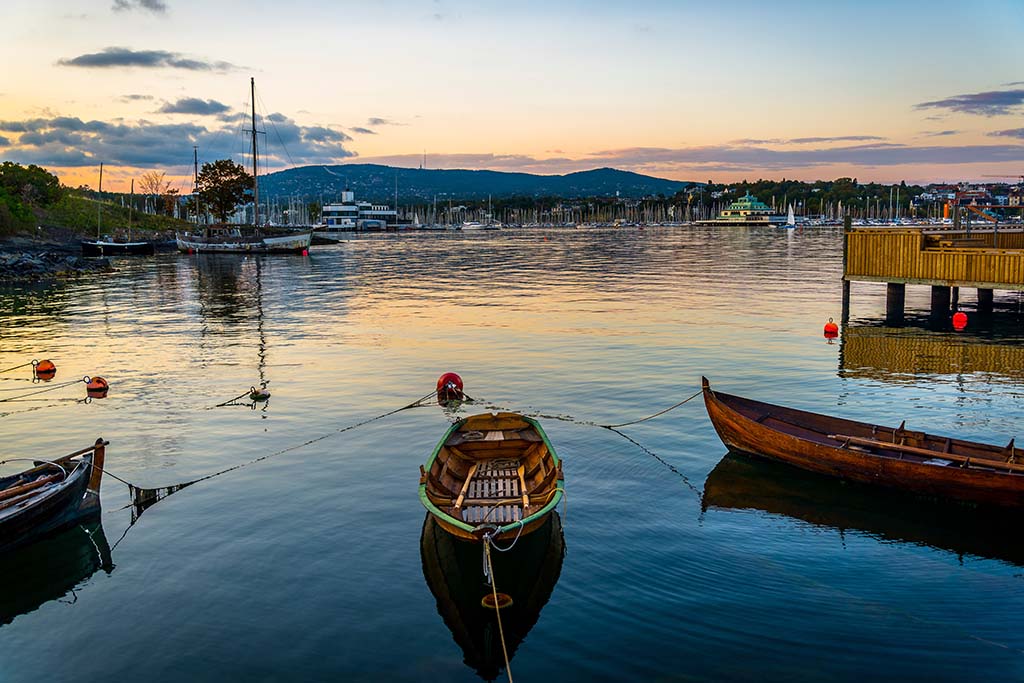Oslo, Norway is not only famous for its Scandinavian simple urban aesthetics and profound cultural heritage, but also a city favored by natural light and shadow. Especially at sunset, the light is soft and the colors are rich, providing photographers and travelers with excellent opportunities for taking pictures.
Ⅰ. Recommended sunset spots
1. Akershus Festning: A picture of history and sunset
Location and introduction
Located on the coast of downtown Oslo, Akershus Festning is a medieval castle with a history of more than 700 years. Looking from a high place, you can not only overlook the Oslo Port and the city center, but also enjoy the golden light of the sunset on the water of the fjord.
Opening hours
Open daily, 09:00–21:00 in summer (April-September); 10:00–17:00 in winter (October-March)
The best viewing time is 1 hour before sunset. It is recommended to arrive before 19:00 in summer and around 15:30 in winter.
Transportation route
Metro: Take Line 1 to Stortinget Station and walk for 10 minutes to arrive
Bus: Take bus No. 30 or 31 to Akershus Festning Station
Self-driving: There is a public parking lot nearby (Vika Terrassen)

Suggested playing time
1.5-2 hours. It is recommended to visit the exhibition area inside the castle in the afternoon and take pictures of the sunset on the city wall or viewing platform in the evening.
Booking platform and fees
The castle’s exterior area is free to visit; the internal exhibition ticket is about NOK 100
Recommended booking platform:
GetYourGuide、Viator
2. Oslo Opera House rooftop (Operahuset Oslo): A minimalist paradise where the sea and sky meet
Location and introduction
The Oslo Opera House is famous for its futuristic sloping roof and is a representative of Nordic minimalist architecture. At sunset, the golden sunlight fills the entire building, and its reflection is reflected on the water of the Oslo Fjord, making it one of the favorite locations for photographers.
Opening hours
The rooftop is open all day (no tickets); it is recommended to go in the evening
The sunset time is late in summer, and the best time to shoot is 20:00-21:30
Transportation route
Walking: Walk about 5 minutes from Oslo Central Station (Oslo S)
Bus: Bus 31, 54, etc. to Jernbanetorget Station
Suggested playing time
1-1.5 hours; the best shooting angle is to slowly climb up to the roof from the front of the opera house, or stand on the edge of the building to overlook the harbor.
Booking platform and fee
The rooftop is free to open; if you want to visit the internal performance, you need to book in advance
Tickets for internal performances can be purchased through the following platforms:
Ticketmaster Norway
3. Ekebergparken: A romantic evening where nature and art interweave
Location and introduction
Ekebergparken is a large park that combines sculpture art and natural scenery, located on a hill in the south of Oslo. Not only can you take a panoramic view of the city of Oslo, it is also famous for being the inspiration for “The Scream” and is a popular landmark for locals to watch the sunset.
Opening hours
The park is open all day, no tickets required
The sculpture exhibition area is open all year round, and the best time to shoot is within 30 minutes before and after sunset (about 20:30 in summer and about 15:30 in winter)
Transportation route
Tram: Take Line 19 and get off at Ekebergparken station
Self-driving: You can park your car in the free parking area near the entrance of the hill park

Suggested play time
2-3 hours, suitable for taking a walk and taking photos after climbing in the evening, and appreciating the sculpture art by the way.
Booking platform and fees
Free admission, no reservation required; if you need to participate in a guided tour, you can use:
Klook、GetYourGuide
4. Holmenkollen Ski Jump (Holmenkollen): A panoramic view of the city skyline
Location and introduction
Holmenkollen is located in the highlands northwest of Oslo and is a symbol of Norwegian skiing culture. Standing on the ski jump viewing platform, you can capture the dreamy picture of the whole city of Oslo turning from blue to gold in the afterglow of the sunset, which is particularly charming in winter.
Opening hours
Opening hours of the ski jump and the museum: 10:00–16:00 (extended to 17:00 in summer)
It is recommended to arrive at least 1 hour before sunset and before 15:00 in winter
Transportation route
Metro: Line 1 to Holmenkollen Station, walk 15 minutes to the top
Self-driving: There is a dedicated parking lot for the viewing platform (charge required)
Suggested play time
2 hours; it is recommended to visit the ski museum first, and then go to the viewing platform to wait for the sunset.
Booking platform and fees
Tickets: about NOK 160 for adults, about NOK 120 for students/children
Recommended platform:
GetYourGuide、Tiqets
5. Bygdøy Peninsula Coastal Trail (Bygdøy Peninsula): A quiet walk under the sunset of the bay
Location and introduction
Located west of the city center of Oslo, Bygdøy Peninsula is a leisure place integrating nature and museums. At dusk, stroll along the coastal path all the way to the wooden pier near the Norwegian Folk Museum, which is an excellent place to photograph the sunset of the bay and the silhouette of the sailboat.
Opening hours
The trail is open all day; no tickets are required
The best time to shoot is between 20:30 and 21:30 in the summer evening
Transportation route
Bus: No. 30 directly to Bygdøynes Station, walk 5 minutes to the seaside
Ferry: From April to October, you can take a ferry from the City Hall Pier (about 15 minutes)
Suggested play time
About 2 hours, it is recommended to arrive at the peninsula in advance, arrange a museum tour or take a break in a cafe on the shore.

Booking platform and fees
The coastal trail is free; the ferry ticket is about NOK 55 one-way
The ferry can be taken through:
Oslo Pass (including ferry)
Take the light and shadow of Oslo into the lens Oslo is not a city famous for its sunset, but because of this, there are fewer crowds and more tranquility here. Whether you are a professional photographer or a tourist who can take photos with your phone, you can find your own light and shadow stories in these places. Choose an evening to go out, put your camera in your bag, and let the sky and water of Oslo tell you what the real Nordic magic moment is.
Ⅱ.Some tips for taking photos in Oslo:
1. The weather changes quickly, be prepared to adapt to different weather conditions
The weather in Oslo is very changeable, especially in spring and autumn, and it is common to experience multiple weather changes in a single day. It may suddenly rain or the weather may be overcast while you are taking photos, so:
Bring waterproof equipment and bags to ensure that your camera and lens will not be damaged by rain.
Wear multiple layers of clothing to adjust to changing weather conditions at any time. Remember to bring a windproof jacket and rain gear, especially when heading to the fjords or mountaintops to take photos.
Have spare batteries and memory cards ready, as batteries may drain faster in cold weather.
2. Pay attention to the daylight hours, especially in winter
In winter, Oslo has very short daylight hours, usually from November to February, with little daylight, especially in high latitudes, where the daylight hours are shorter. Be sure to seize the right time when taking photos:
Check the sunset and sunrise times in advance, especially in winter, when the sunset is usually earlier (around 15:30 to 16:30) and the sunrise time is later (around 9:00). Plan your photoshoot around these times.
Take advantage of the golden hour, the soft natural light of early morning or dusk, when photos are at their most stunning.
3. Choose the right location
Oslo is not only a bustling city, but also has many natural attractions and cultural heritage sites. Choose the right location based on your photoshoot needs:
City streets and architecture: Suitable for photographing modern buildings and busy city scenes, we recommend shooting in Aker Brygge, Opera House and the Barcode area.
Nature and sunsets: Choose picturesque natural attractions such as Holmenkollen, Hovedøya Island or the Oslo Fjord.
Cultural heritage and historic buildings: Vigeland Park and Akershus Fortress are great places to photograph.
4. Consider using a tripod
If you plan to shoot photos with long exposures or in low-light environments (such as night scenes or sunsets), a tripod is an essential tool. Oslo’s natural scenery is most stunning at dusk and night, and using a tripod can ensure clear, stable photos and avoid blur caused by shaking hands.
You can use a tripod to shoot sunsets, starry skies or city panoramas at various scenic spots in the city, especially at the fjords and highlands.
5. Bring backup equipment
If you are going to be shooting outdoors for a long time, it is recommended to bring some backup equipment. Oslo sometimes has extreme weather, and you may encounter situations where you need to change equipment or shutter speed when taking pictures. Bring backup:
Camera batteries and memory cards to avoid battery exhaustion or insufficient memory.
Spare lenses, different lenses are suitable for different shooting scenes (such as landscapes, architecture or portraits).